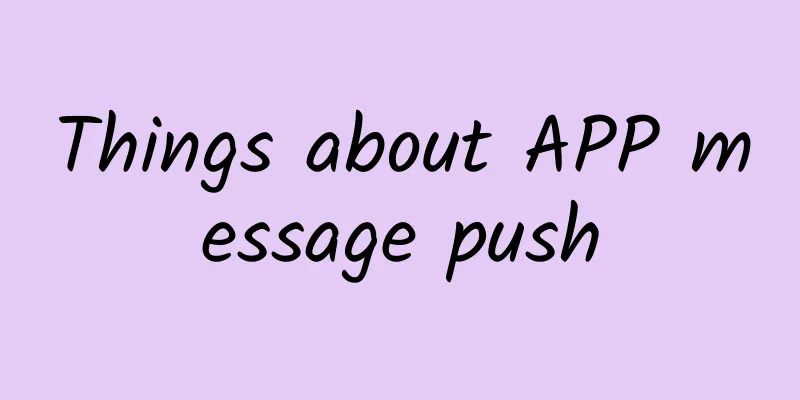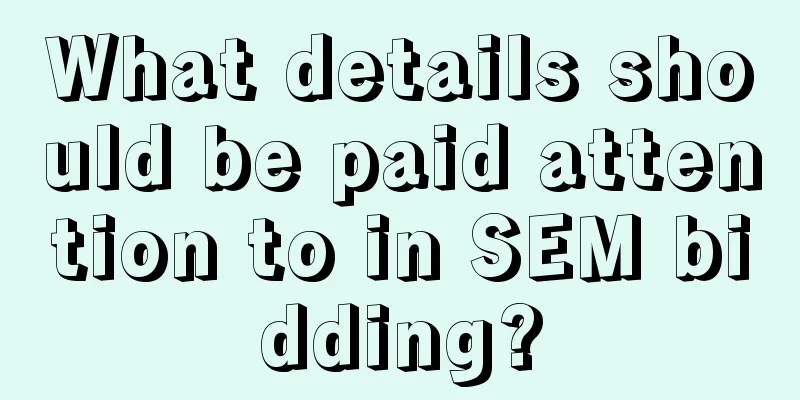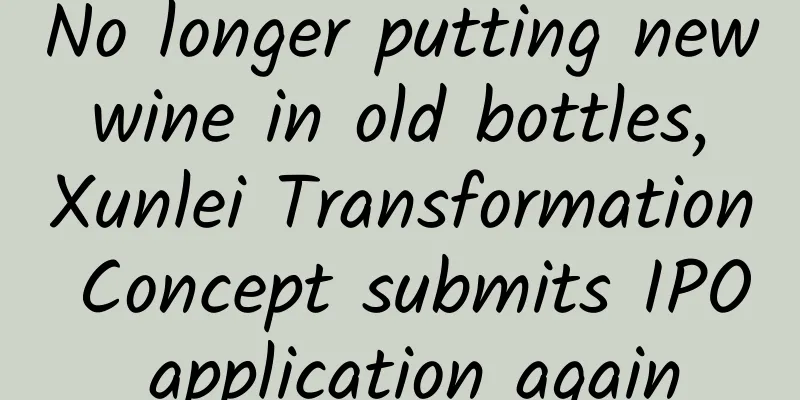Things about APP message push

Part 01 What is push notification?Push notifications actually happen on our phones every day, as shown in Figure 1, unless your phone does not have the app installed or has disabled the system notification bar permission. These push notifications constantly remind and guide us to open the app and become their active users, which is also the purpose of push notifications. Figure 1 APP message notification on the mobile phone The concept of "push" was first proposed by PointCast Networks in 1996, aiming to provide users with more accurate and real-time message notifications. With the development of push technology, push technology has mainly gone through three stages: 1.1 Polling methodThe push method is initiated by the client. The client asks the server whether there is any new push message in the form of a scheduled task. Disadvantages: If the request frequency is too high, more resources (traffic, power, server resources) will be consumed; if the request frequency is too low, the message delay will be high and real-time performance cannot be guaranteed. 1.2 SMS push methodThe message is sent to the user's device through the operator's SMS channel. The client is implanted with an SMS interception module, which can intercept the SMS and extract the content and forward it to the APP application for processing. Disadvantages: SMS push requires payment and is costly; there are security risks if the client intercepts SMS. 1.3 Long connection push methodPersistent connection push is based on TCP persistent connection. After the client actively establishes a TCP persistent connection with the server, the client periodically sends heartbeat packets to the server to maintain the connection. When necessary, the server directly notifies the client through the established TCP connection. This solution is also the current mainstream message push implementation method. The current mainstream message push process can be described by Figure 2 below. Figure 2 Mainstream message push process Part 02 Technical thingsIn the current mainstream long connection push method, if you want to actively push a message to the APP, you need to establish a channel between the APP client and the server, commonly known as a long connection. If the mobile phone retreats to the background, this long connection is maintained by the APP, which is very difficult. On the one hand, the mobile phone system does not allow this. Imagine if all the APPs on the mobile phone are always in the background to keep the long connection alive, the performance of the mobile phone system will be greatly reduced; on the other hand, the development cost is too high. In order to develop the APP, it is also necessary to maintain the long connection. Therefore, most companies will not build their own push services. If it is not feasible to build a long connection by yourself, you have to rely on the long connection of the mobile phone system. Let's take a look at the push channels based on the system long connection of the current mainstream mobile operating systems Android and iOS. 1. Apple's mobile phone system has an official push channel APNs (Apple Push Notification service). APNs will establish a long system connection with the Apple server at the mobile phone system level. Our business only needs to push the push notification to the APNs system. After receiving the message from the APNs server, the mobile phone system will help us forward it to the corresponding APP. In this way, as long as your mobile phone is connected to the Internet normally, you can receive push notifications normally even if the APP is not opened. The working mechanism of Apple's mobile phone message push through APNs can be simply described by the following Figure 3. Figure 3 APNs push process 2. It stands to reason that the Android mobile phone system should also have such a push system. Indeed, Google has also developed a push service called GCM (Google Cloud Messaging), which is similar in principle to Apple's APNs. However, due to the instability of Google's access in China, the GCM service cannot be used normally in China (the "Android Unified Push Alliance" being established by the Ministry of Industry and Information Technology is still under development). In order to solve this problem, many mobile phone manufacturers have built-in system push functions in their mobile phone systems, such as Xiaomi, Huawei, vivo, oppo, Meizu, etc. Due to the issue of access costs, a large number of third-party push service providers have also emerged, such as Getui, Jiguang, Umeng, etc. The push process of third-party push service providers is shown in Figure 4 below. Figure 4: Push process of third-party service providers Part 03, Beyond technologyPush notifications are a double-edged sword for apps. If pushed well, they can improve user retention, product activity, and user stickiness to the app; if pushed poorly, they may cause users to be disgusted and complain, and at best, they may close notification messages or even uninstall the app. Therefore, how to master this sword is also a great test of product operation capabilities. Generally, a push notification involves several factors: push copy, push frequency, timing, and push target group. 3.1 Push copyThere is a rule in advertising marketing theory called the AIDA rule, as shown in Figure 5 below. Figure 5 AIDA rule Its specific meaning is that a successful salesperson must attract or divert the customer's attention to the product, making the customer interested in the product being sold, so that the customer's desire will arise, and then prompt the customer to take purchasing action and complete the transaction. 3.2 Push frequency and timingRegarding push frequency, generally speaking, a user of the same APP should not receive more than 3 push messages a day. Too many messages can easily cause trouble to users, and users may not even be able to receive push messages every day (it may be better to push once every other day). Regarding the timing of push notifications, if it is information-based, the more timely the better. Otherwise, if your competitors have already pushed their notifications and users already know about them, who would click on them? At the same time, as some official notifications, the accuracy of the content should be maintained. Generally, we hope to push notifications during relatively free time, such as on the way to work and breakfast time (9-10 am), lunch break (12-14 pm), off-get off work time (18-19 pm) and before bedtime (21-22 pm). Of course, the time may be adjusted for different user groups. This requires finding a relatively suitable time based on user groups and business attributes. 3.3 Push crowdRegarding the push groups, nowadays large Internet companies have their own big data platforms or user portrait systems. As the saying goes, each person has his own face. The content pushed to people with different labels should be differentiated to achieve the highest open rate and click-through rate. This is especially necessary in the e-commerce field. For example, if a group of users have just registered on the platform, coupon information can be pushed to them to promote their desire to buy; if a group of users are geographically located in Hangzhou, they can be recommended what kind of clothes they should wear in Hangzhou on that day based on the weather in Hangzhou; if a group of users are 165+cm tall, they can be recommended clothing combinations that are suitable for their body shape. By combining the actual attributes of the group, such push will be more accurate, and the probability that users may click will be higher. 3.4 Push AccidentSince push messages are difficult to withdraw once they reach the APP terminal, message push can easily cause push accidents. Figure 6 Push accident So how should we avoid push accidents in actual operations? 1. Before pushing, it is best to define the target group, so that even if a push accident occurs, only some users will be affected. 2. Strengthen the review of push messages, preferably in conjunction with the work order approval process to ensure that they are controlled before the message is pushed. 3. The push system should manage blacklists and whitelists, conduct whitelist testing before push, and manage blacklists for sensitive users. Part 04 ConclusionOf course, there are many points worth paying attention to in message push, such as how to improve the reach rate and increase the user click rate. These may be the KPIs that product operations pay more attention to. As mentioned at the beginning of the article, message push is a double-edged sword. Whether it is used skillfully not only tests the technical level of developers but also the ability of operations personnel. |
<<: SwiftUI Layout Protocol - Part 2
>>: Android 13 new features and adaptation development guide
Recommend
Nezha breaks through the heart-piercing curse, and the scientific principle behind it is actually this →
Review expert: Zhou Hongzhi, senior experimenter ...
Domestic cars are overtaking joint venture brands, and new energy battery services have become a landmark turning point
Thanks to the booming new energy industry, Chines...
Will artificial starch advance the progress of human civilization?
After six years of exploration, the research team...
It's not true that Tesla can predict accidents
You may have seen a lot of news reports about a d...
There are so many mosquito repellent products, which ones are the safe and effective mosquito repellent ingredients?
The weather is getting hotter, and there are more...
What is the process for opening a Toutiao advertising account? What do you need to provide?
I plan to place an ad on Toutiao, but I don’t kno...
It is said that dead crabs cannot be eaten, so why do supermarkets still sell frozen crabs?
Today is the Mid-Autumn Festival. What delicacies...
Eight aspects to plan an efficient marketing operation plan
In recent years, mobile Internet has developed ra...
Paving the way for the next generation, the HOME button is the best update of iPhone 7
The iPhone has been on the market for a while now,...
The world's first! Chinese scientists reveal details of its birth
Scientists reveal details of the creation of a hi...
How do Facebook, Dropbox, and HubSpot calculate customer acquisition costs?
Among all the factors that affect a company's...
Practical tips | How to do marketing promotion on Douban
What I want to share with you today are some of m...
From popular to unpopular, a review of the history of tablet computers
On April 3, 2010, Apple released the first genera...
Babao Compounding Academy "Hong Kong Stock IPO Master Service Course" 3rd issue
The capital only needs to start from 10,000 to 20...
Don't eat! Don't eat! Don't eat!
Sugarcane is a sweet and juicy fruit Always popul...



![[Yi Dian News] Three killer skills and three traps for content operations!](/upload/images/67cc377aab330.webp)





